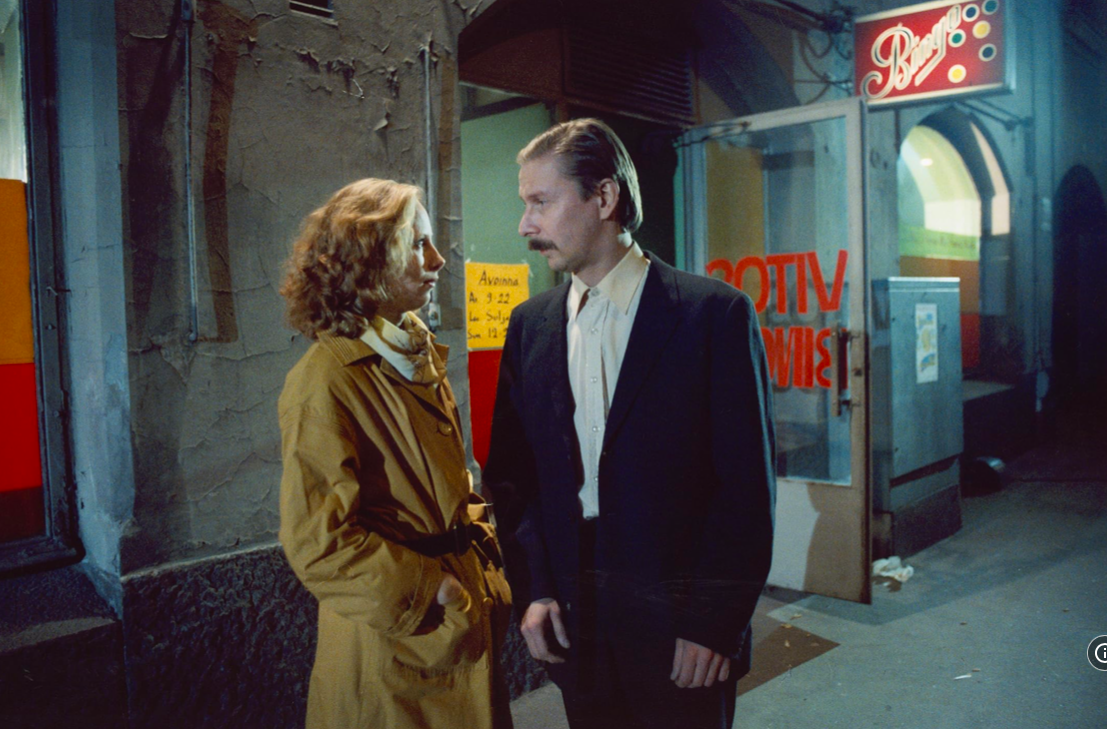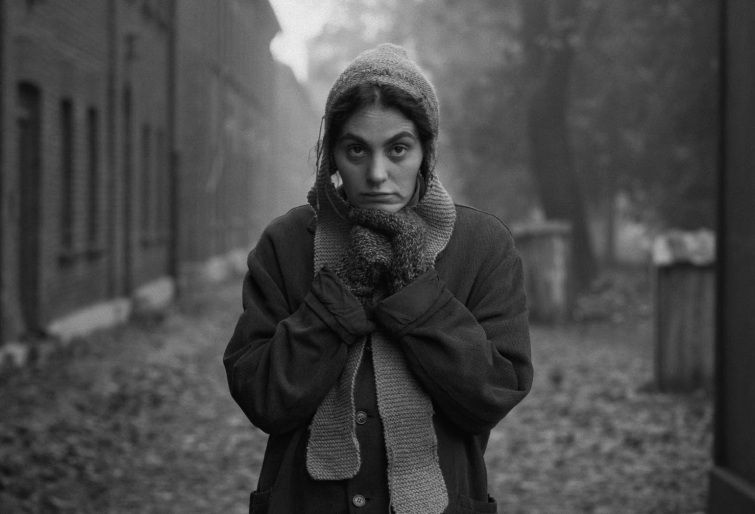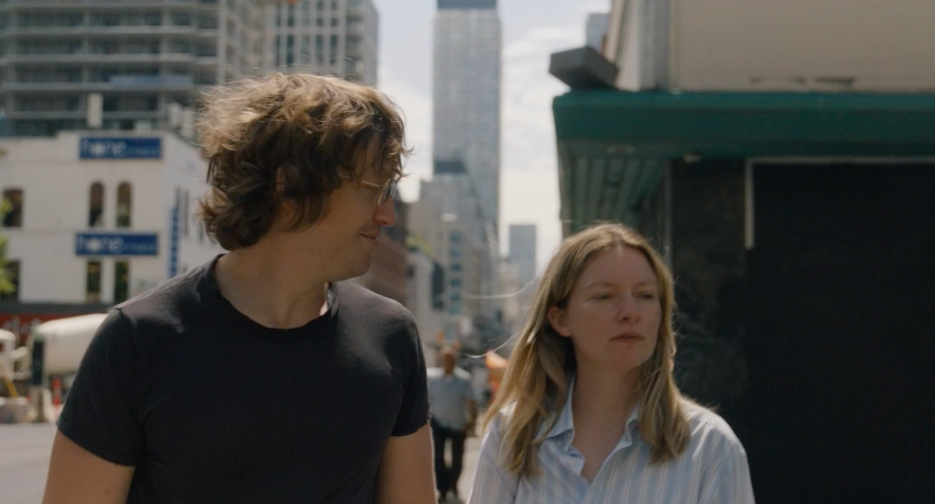OTC Rating : 4.5/5
Introduction
Shadows in Paradise is the first installment in Aki Kaurismäki’s celebrated “Proletariat Trilogy,” and like much of his work, it tells a small story in a big way. On the surface, it’s a minimalist love story between a garbage truck driver and a supermarket clerk. But underneath, it’s a poetic portrait of everyday loneliness, working-class life, and the fragile beauty of human connection.
Kaurismäki’s distinct style—deadpan, restrained, and deeply human—shines in every frame. This short yet profound film is a masterclass in how simplicity can evoke the deepest emotions.
Story & Themes
The story follows Nikander, a garbage collector in Helsinki who lives a lonely, routine-driven life. When he meets Ilona, a shy supermarket cashier, a subtle romance begins to blossom. There are no grand gestures or dramatic plot twists here—just two quiet people fumbling toward intimacy in a cold world.
What makes Shadows in Paradise special is its emotional restraint. The characters hardly speak, but every silence, every glance, says something. The story is about ordinary people trying to find meaning, love, and dignity in a monotonous world. It captures the existential stillness of life in a capitalist society—where work defines people, and relationships feel like rebellion against isolation.
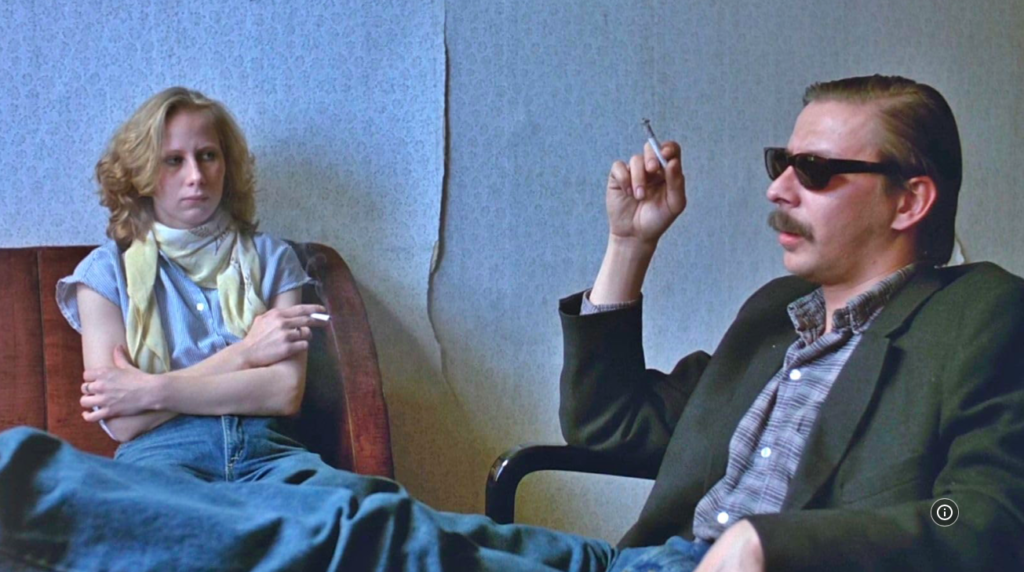
Image courtesy : IMDB
Direction: Aki Kaurismäki’s Signature Minimalism
Kaurismäki’s direction is lean and deliberate. He uses still frames, long takes, and minimal camera movement to let the viewer absorb the moment. Nothing is over-explained. Characters don’t share their feelings verbally—it’s all in the atmosphere.
This minimalism isn’t about cutting corners—it’s a conscious aesthetic that gives space for reflection. Kaurismäki believes in letting images and silences speak louder than dialogue. The film’s dry humor, stoic tone, and emotional undercurrents come from his razor-sharp understanding of life’s absurdity.
Performances
Matti Pellonpää as Nikander is unforgettable. His tired eyes and awkward presence communicate volumes about his inner world. There’s a deep sadness and kindness in his stillness. Kati Outinen, who would become a Kaurismäki regular, plays Ilona with quiet vulnerability. Her subtle expressions and unspoken strength give the character depth.
The chemistry between them is understated but real. There are no dramatic love declarations—just small gestures, quiet companionship, and mutual loneliness. This naturalistic acting fits perfectly with Kaurismäki’s cinematic universe.

Image courtesy : IMDB
Production Design & Art Direction
The film’s production design is intentionally sparse. The settings—garbage trucks, small apartments, supermarkets—are plain but full of atmosphere. They reflect the characters’ mundane routines and internal emptiness. The muted color palette—lots of grays, browns, and dull blues—adds to the sense of melancholy and realism.
Lighting is often low and natural, reinforcing the gritty, down-to-earth mood. This stripped-down aesthetic keeps the focus on the characters and their subtle emotional arcs.
Cinematography
The cinematography in Shadows in Paradise, shot by Timo Salminen, is one of the film’s most powerful tools. It reflects Aki Kaurismäki’s signature style—framed simplicity, static shots, and expressive minimalism. The camera hardly moves, yet every frame feels intentional and loaded with emotion.
Salminen uses still, composed shots to create a quiet intimacy with the characters. There are no flashy angles or dramatic camera movements; instead, the camera observes from a respectful distance. This stillness allows the viewer to feel the silence and the mundane rhythm of everyday life.
The use of natural lighting and soft shadows enhances the raw, almost documentary-like quality of the film. Interiors are dim and washed in muted tones, while exterior scenes carry a cold, gray hue that mirrors the emotional climate of the characters.
Sound Design & Music
Sound design in Shadows in Paradise is minimalist, much like everything else. Silence plays a big role, creating space for contemplation. When sound is used—like the mechanical noise of garbage trucks or distant traffic—it grounds the story in the real world.
Music is used sparingly but effectively. The film features melancholic rock and tango tracks that reflect the emotional states of the characters. One notable track is “Anki” by Melrose, used with great emotional weight. Kaurismäki, a lover of old records and jukebox culture, curates music like a mixtape for broken hearts.
The background score is nearly nonexistent—but that’s the point. Silence, ambient noise, and occasional songs become the emotional soundtrack.
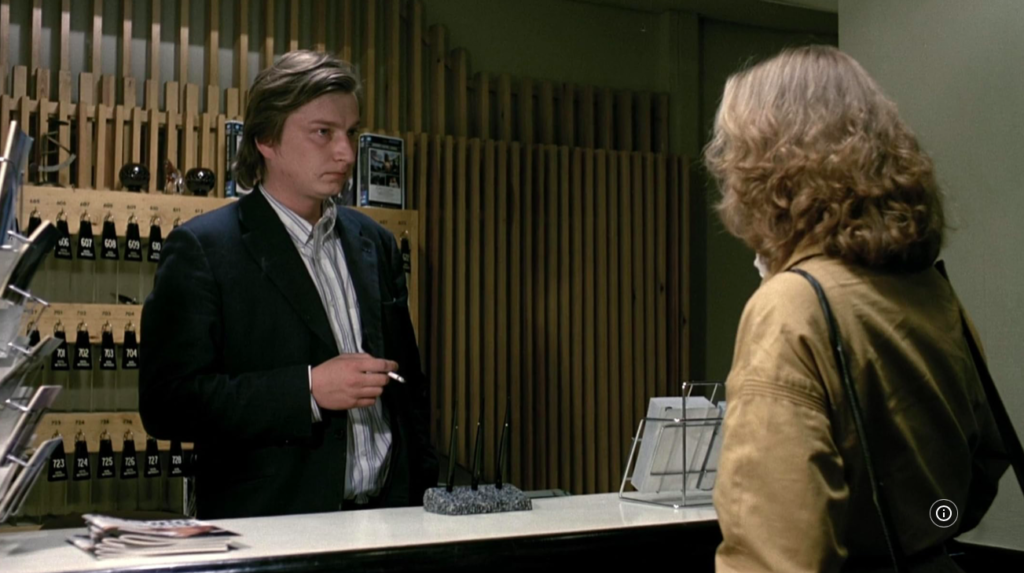
Image courtesy : IMDB
Editing
The editing is sharp, unfussy, and rhythmic. Scenes don’t linger longer than necessary, yet nothing feels rushed. Kaurismäki’s editor, Raija Talvio, understands the tempo of quiet lives. Cuts are functional, designed to maintain flow while never distracting from the emotion.
The film’s pacing mirrors the monotony of the characters’ lives—slow but steady, with moments of surprise and stillness. The editing respects the silences, allowing time for things to sink in emotionally.
Music & Background Score
Rather than using a traditional score, Kaurismäki relies on pre-existing songs, carefully placed. The use of diegetic music—coming from radios, jukeboxes, and bars—adds realism and emotional weight. The songs serve as moments of brief release, where characters momentarily escape their own silence.
The music selection is always deliberate, adding soul without melodrama. It gives a subtle rhythm to the film and connects the audience with the characters’ unspoken emotions.
Conclusion
Shadows in Paradise is a quiet, tender, and deeply human film. Through its minimal dialogue, still imagery, and emotional restraint, it tells a story that feels universal. It’s about the courage to hope, the ache of loneliness, and the small, fragile victories of love.
Technically, it’s a minimalist triumph—every decision in direction, acting, design, and editing is precise and purposeful. This is not a film of spectacle—it’s a film of stillness and soul.
Why Watch It :
- Aki Kaurismäki’s signature deadpan direction and subtle humor
- Natural, understated performances
- Minimalist yet deeply expressive cinematography
- Thoughtful sound and music choices
- A moving, slow-burn love story wrapped in melancholy realism

